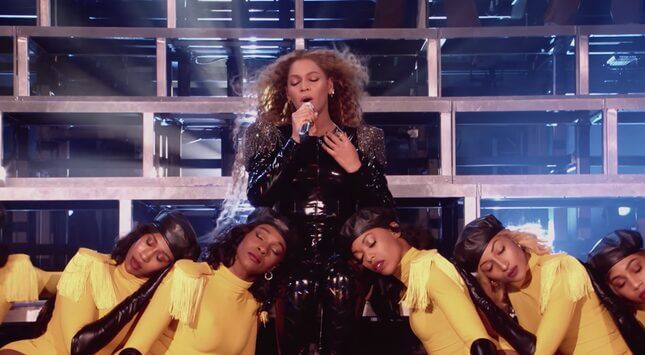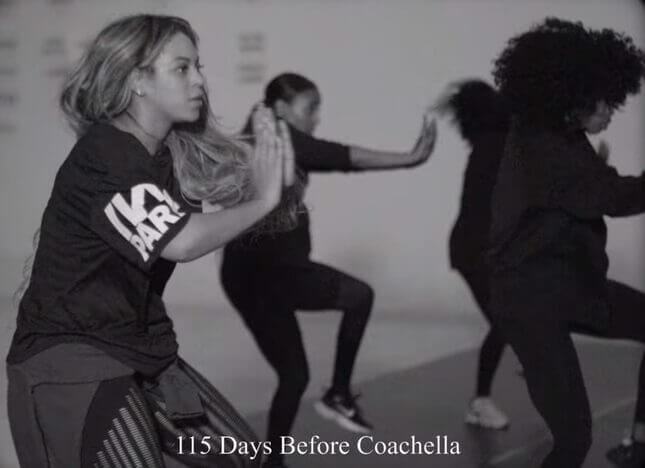
Screenshot: Netflix
It is a testament to Beyoncé’s cultural power that adults sacrificed their sleep and counted down the hours to the Netflix release of a concert film for a performance they’d already seen a year prior. Beyoncé’s impact at Beychella was so monumental that it reinforced and cemented her place as our greatest living entertainer. And there was value in experiencing the moment yet again. The sheer scale and spectacle of her two-hour headlining performance was her own personal stigmata; convincing proof of her visionary creative might, presented with dismissive, arrogant glee and braggadocio to the Doubting Thomases of the world. With Homecoming (written, directed and produced by the star herself), Beyoncé allowed her fans an intimate look not just at the behind the scenes process of creating this monumental performance, but at the work ethic and sacrifices that it took to get there.
Beyoncé is a woman with the singular ability to reinvent herself. Not in the Madonna sense of creating and living in new personas, but in the way that she is capable of looking back at her past creative output and finding ways to bring it into the present, updating it to reflect any such time that she might need to reference it. In Homecoming, we’re reminded again of how often she does this with ease. Mixing her own tracks with Nina Simone, O.T. Genasis, Dawn Penn, and Sister Nancy, she incorporates cultural touchstones that are centered in the African American tradition, but also reach across the ocean to connect them to the diaspora and a communal experience of blackness.
-

-

-

-

-

-

-

-

-

-

-

-

-

-

-

-

-

-

-

-

-

-

-

-

-

-

-

-

-

-

-

-

-

-

-

-

-

-

-

-









































